So far, what you've done is sample the dice throws (note I've added a line setting the seed for reproducibility:
set.seed(123)
x <- sample(1:6, size=100, replace = TRUE)
The simple command to "add[] up the results of the individual dice" is table():
table(x)
# x
# 1 2 3 4 5 6
# 17 16 20 14 18 15
Then, to "plot the probability distribution of outcomes," we must first get that distribution; luckily R provides the handy prop.table() function, which works for this sort of discrete distribution:
prop.table(table(x))
# x
# 1 2 3 4 5 6
# 0.17 0.16 0.20 0.14 0.18 0.15
Then we can easily plot it; for plotting PMFs, my preferred plot type is "h":
y <- prop.table(table(x))
plot(y, type = "h", xlab = "Dice Result", ylab = "Probability")

Update: Weighted die
sample() can easily used to simulate weighted die using its prob argument. From help("sample"):
Usage
sample(x, size, replace = FALSE, prob = NULL)
Arguments
[some content omitted]
prob a vector of probability weights for obtaining the elements of the vector being sampled.
So, we just add your preferred weights to the prob argument and proceed as usual (note I've also upped your sample size from 100 to 10000):
set.seed(123)
die_weights <- c(4/37, rep(6/37, 4), 9/37)
x <- sample(1:6, size = 10000, replace = TRUE, prob = die_weights)
(y <- prop.table(table(x)))
# x
# 1 2 3 4 5 6
# 0.1021 0.1641 0.1619 0.1691 0.1616 0.2412
plot(y, type = "h", xlab = "Dice Result", ylab = "Probability")


